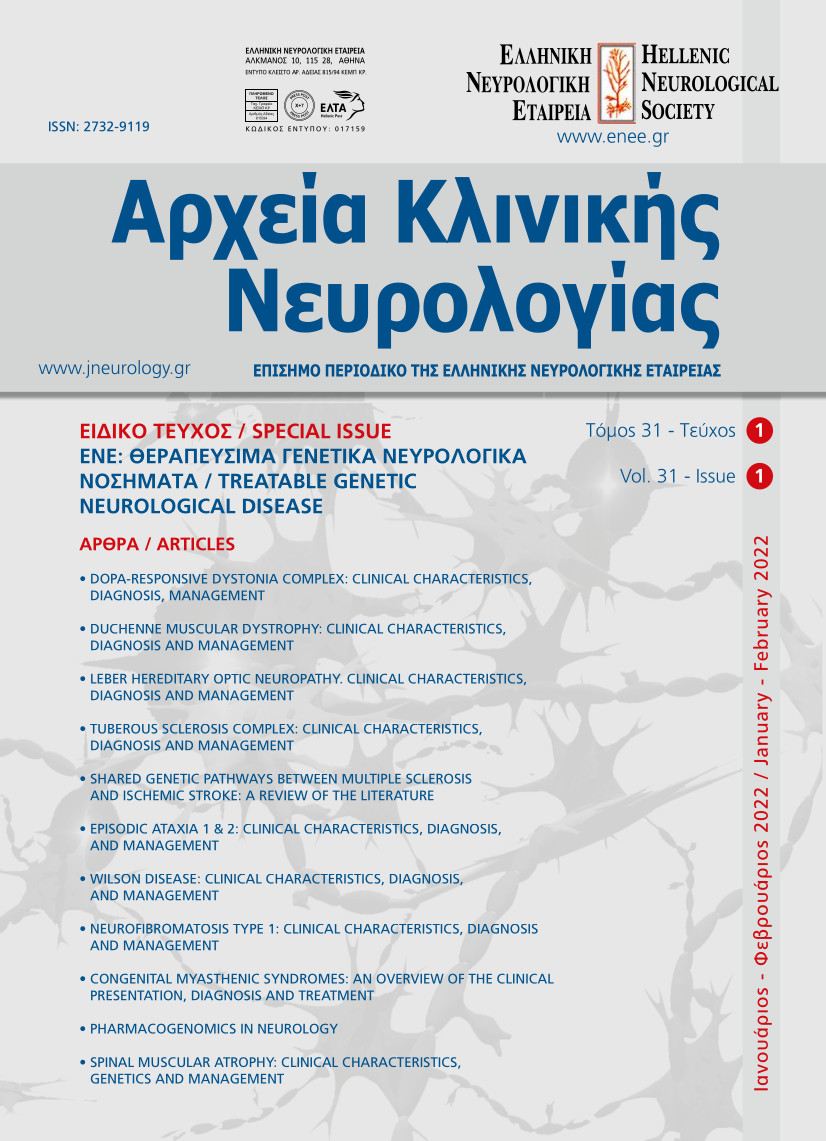NEUROFIBROMATOSIS TYPE 1: CLINICAL CHARACTERISTICS, DIAGNOSIS AND MANAGEMENT
Keywords:
neurofibromatosis type 1, NF1 gene, neurofibromas, café au lait macules, optic pathway gliomaAbstract
Neurofibromatosis type 1 (NF1) is caused by NF1 gene pathogenic variants that are either inherited in an
autosomal dominant pattern or occur de novo. Both the peripheral and the central nervous system are
commonly affected in NF1, with neurofibromas, nerve sheath tumors, and optic pathway gliomas being
the most prominent features. This nervous system involvement leads to heterogeneous clinical manifestations,
including affective, cognitive, and behavioral problems, visual disturbances, sensory and motor
deficits, and epilepsy. Other common manifestations of NF1 concern the skin (café-au-lait macules, axillary
freckling and dermal neurofibromas), the eye (Lisch nodules) and the skeleton (scoliosis, other bone
abnormalities). Diagnosis rests largely on the clinical picture, following recently revised diagnostic criteria,
and often entails the use of MRIs or other imaging techniques. Lately, confirmation of the diagnosis of NF1
is increasingly pursued through genetic testing. Management of the disease has been symptomatic and
occasionally surgical, with removal of tumors that cause functional or other type of disability. Advances
in the understanding of the molecular pathophysiology of the disease, including the elucidation of the
mechanism of the NF1 gene-mediated suppression of tumorigenesis, have led to the development of
targeted molecular therapies. Despite the advent of these novel diagnostic and therapeutic approaches,
the mainstay of management is still based on high suspicion for the disease, even in the absence of family
history, to enable early detection and accurate diagnosis. This timely diagnosis of NF1 should be followed
by a multidisciplinary approach targeting the multiple facets of this challenging disease.


